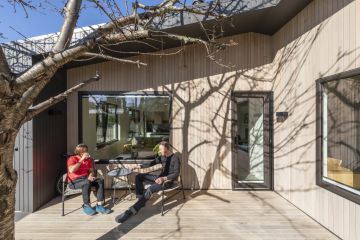Australia's biggest house price rises: The regional town that has rebounded 27 per cent

A West Australian mining town that suffered one of the nation’s most dramatic property price crashes has earned the ultimate comeback crown after house prices there rose 26.9 per cent over the past year.
Karratha, which is nestled in the state’s iron-ore mining heart 1500 kilometres north of Perth, scored the nation’s biggest house price hike in a single year, with median prices rising from $331,000 to $420,000, according to the Domain Group’s latest House Price Report.
The growth follows an industry boom that is continuing to breathe life into a town which at the mining and construction industry peak in 2014 boasted median house prices of $820,000 – eclipsing that of even Sydney at the time.
Just three years later, house prices had plummeted to just over $300,000.
While Karratha claimed this year’s property price rise prize, Pilbara Real Estate director and licensee Rob Sleator said the town’s market had been moving in the right direction for almost 30 months.
“The thing is it [Karratha] is a special region … it is a unique environment and the economy moves independently and people talk about the busts … but if you look at the economic output [during those times] it’s still putting out. It’s like the sixth biggest economy in the country,” Mr Sleator said.
“Here you get these major expansions, such as the Pluto Train 2 [by Bechtel] that could mean another 2500 workers here. That just sends the market nuts … that’s more than 10 per cent of the population.”
With two additional fly-in fly-out workers’ camps in the pipeline, Mr Sleator believes there’s plenty of price growth still left in Karratha and while the little town that occasionally becomes a city might not reach its former glory days, the future’s looking bright.
Other regional centres across the country also reported significant price rises over the past year, with units in Devonport City, Tasmania, clocking a 22.6 per cent rise in a single year, while South Australia’s Wattle Range reported a house price rise of 18.7 per cent to $270,000.

In Queensland, the star performer was tiny – central Queensland district Banana, where house prices rose 14.6 per cent to $235,000, while Strathbogie in Victoria, just 187 kilometres north of Melbourne, achieved the state’s highest annual price rise of 15.6 per cent to $370,000. In NSW, median house prices in Inverell climbed 15.5 per cent to $305,000.
The Northern Territory was the only notable exception to the regional median price growth.
Median unit prices in Darwin dropped a painful 12.2 per cent from $352,000 to $309,000 – a loss that came off the back of a 32.8 per cent price drop over five years.
House prices in the Northern Territory city also dropped by 4.9 per cent over the past year and 32.8 per cent over the past five years, leaving the median price at $485,000.
Susie Patton-Quinn, from Real Estate Central NT, said while median prices were the lowest they’d been in 10 years, the upside was an influx of buyers.
“It’s a really good time to buy … and I think it’s going to be like this for some time,” Ms Patton-Quinn said.
We thought you might like
States
Capital Cities
Capital Cities - Rentals
Popular Areas
Allhomes
More






